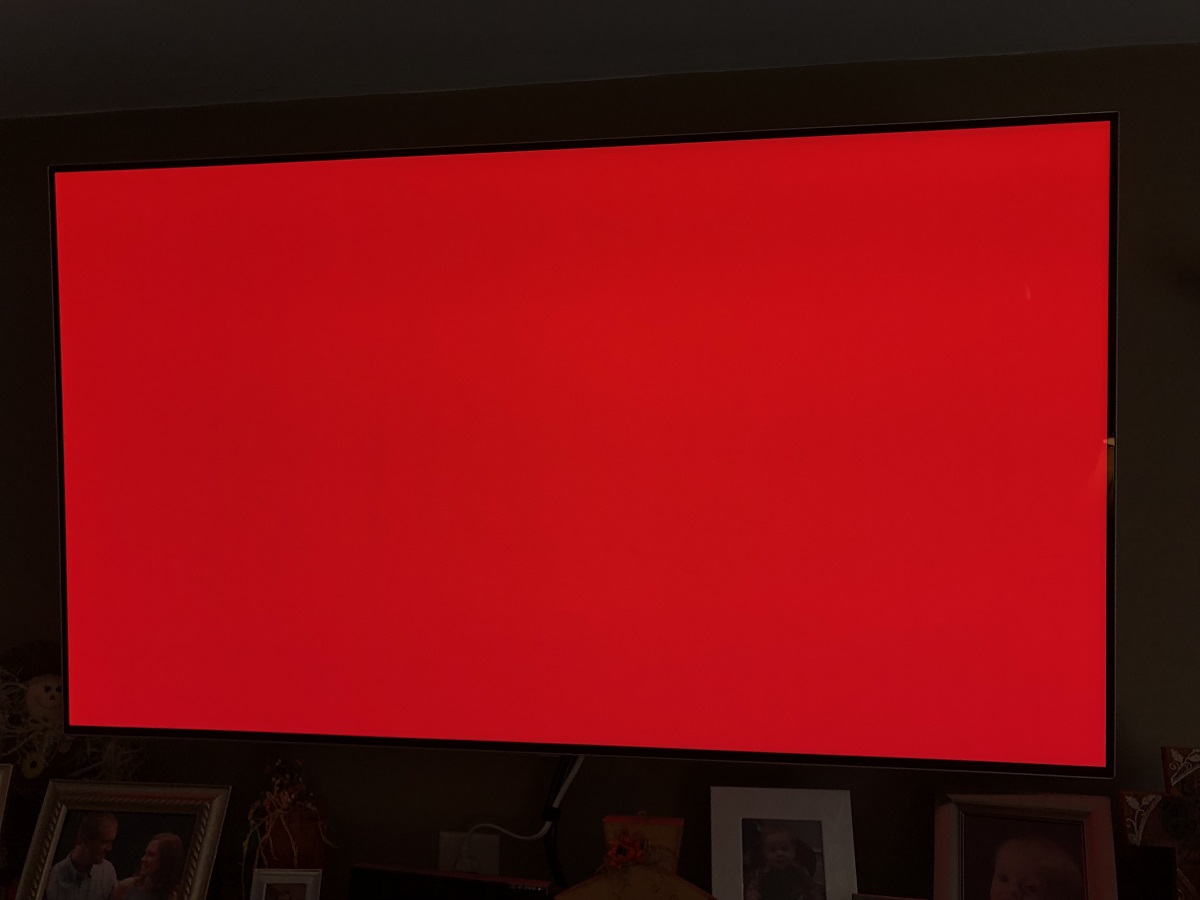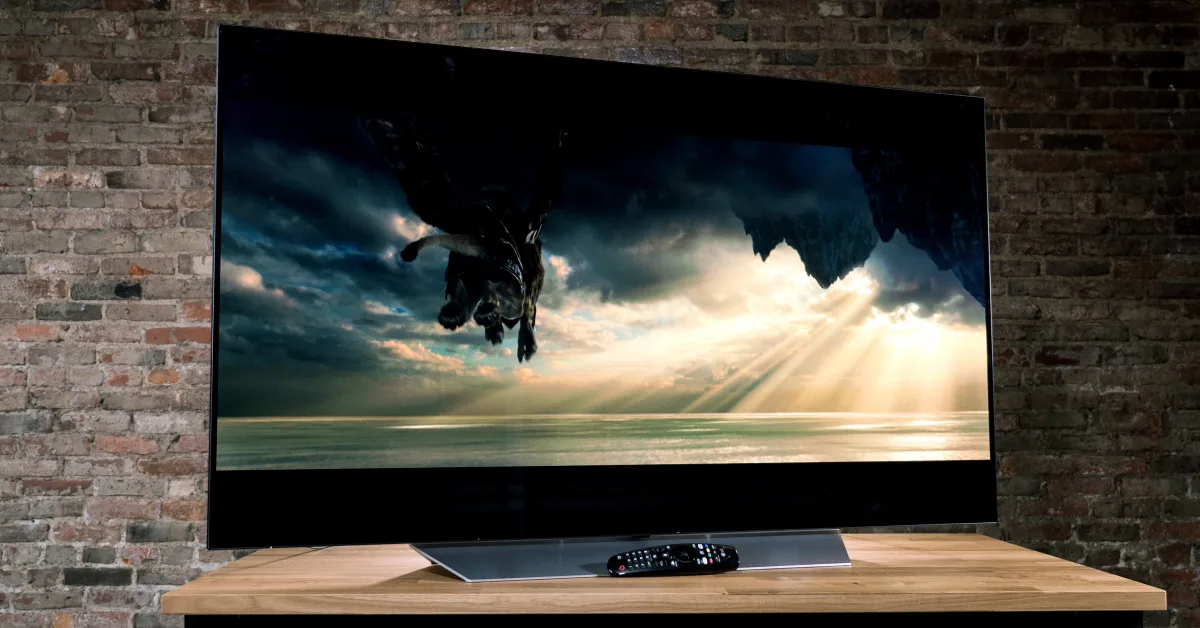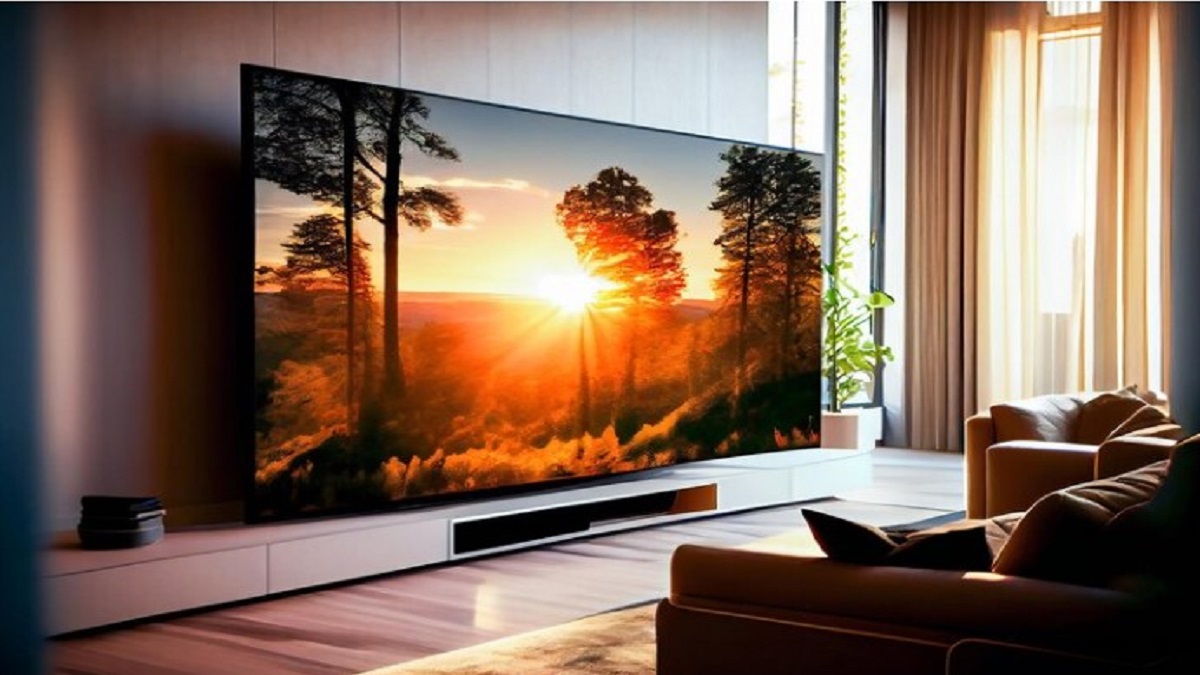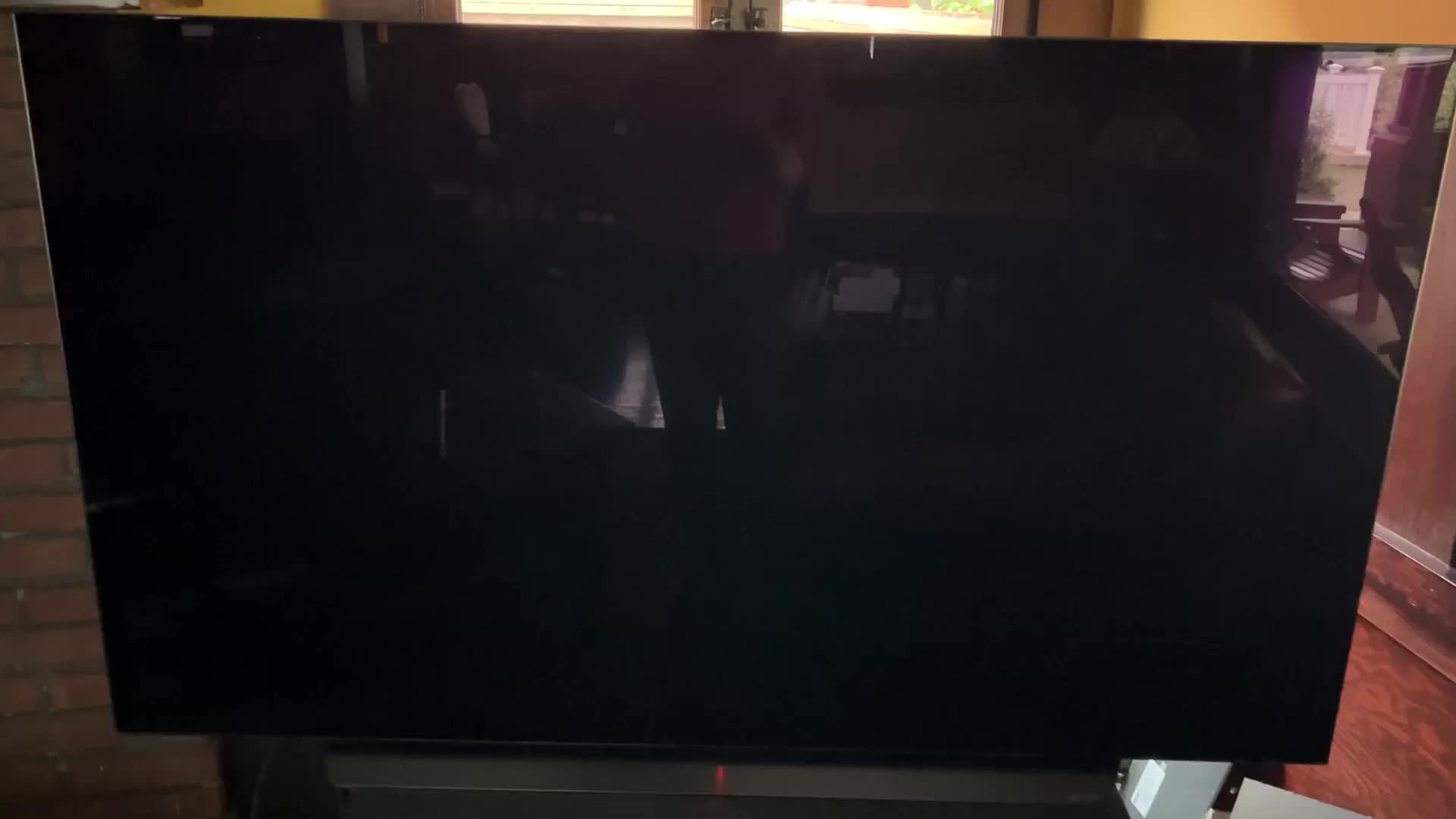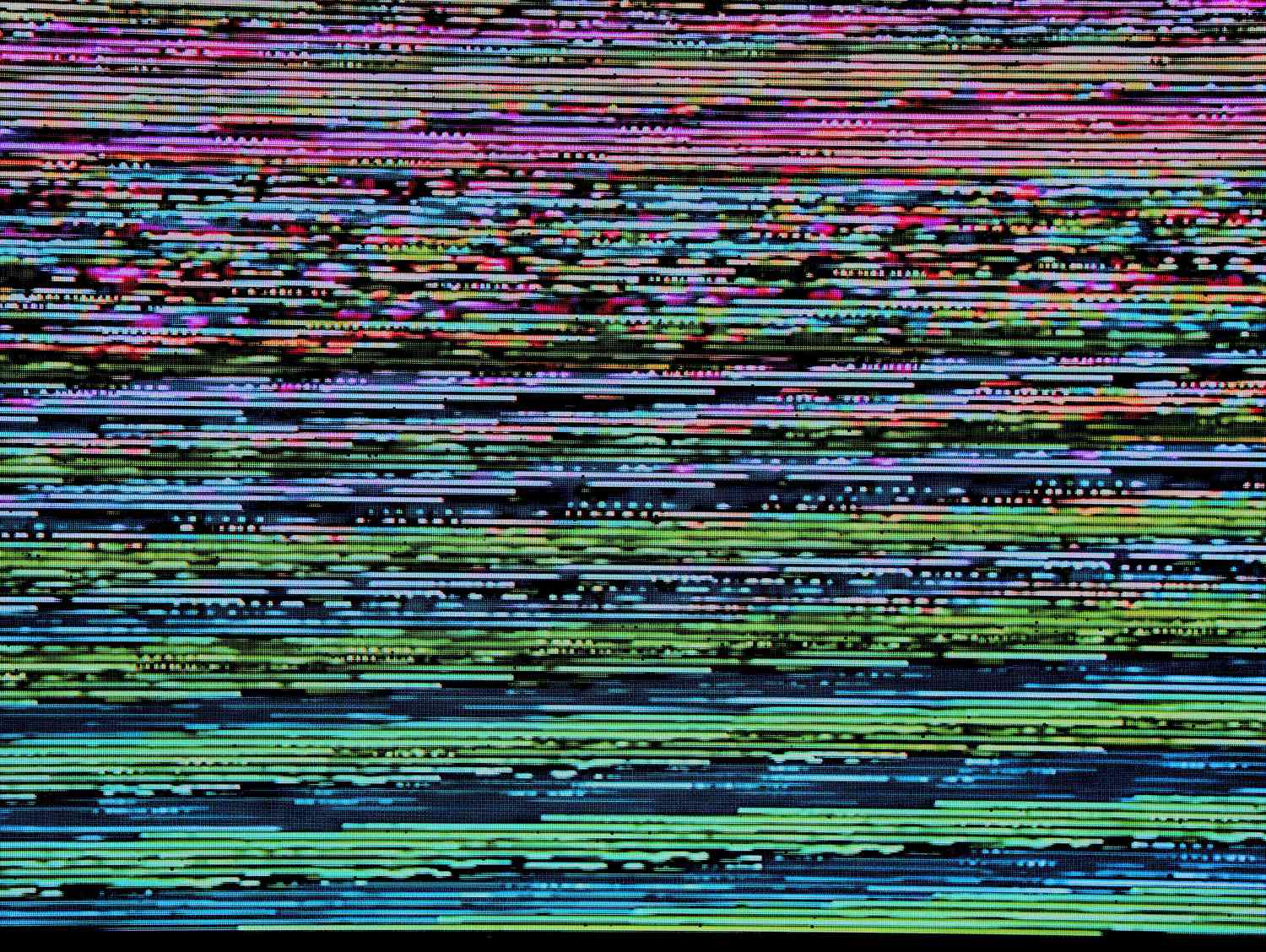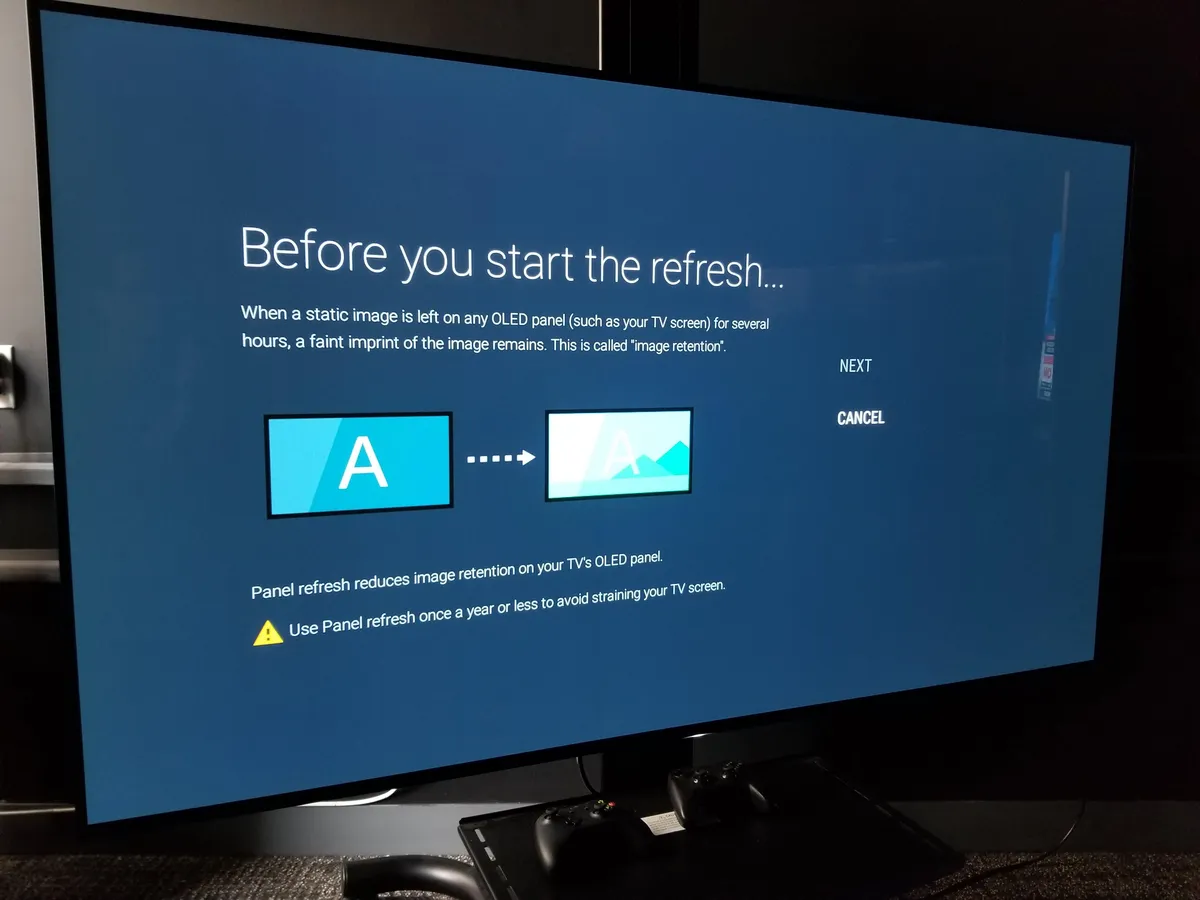Introduction
Welcome to the world of OLED TVs, where vibrant colors and stunning picture quality come to life. However, even the most advanced technology can sometimes encounter minor glitches. One common issue that users may face is a stuck pixel on their OLED TV screen. A single pixel that remains permanently on or off can be frustrating and can affect your viewing experience. But fear not, as there are several methods to fix this issue without needing to call for professional help.
Before we delve into the solutions, let’s understand what a stuck pixel is. Essentially, it refers to a single pixel that fails to change color or remains stuck in one color. It can appear as a tiny dot that is either constantly lit or permanently dark, while the rest of the pixels on the screen function normally. Though it may seem like a minor annoyance, a stuck pixel can be noticeable, especially when displaying dark or solid-colored images.
There are various causes for a pixel to get stuck. Manufacturing defects, electrical malfunctions, or physical damage to the screen can all contribute to this issue. Additionally, prolonged exposure to static images or leaving the TV on for extended periods without rest can also increase the risk of encountering a stuck pixel. It’s important to note that a single stuck pixel is different from a dead pixel, which refers to a pixel that remains completely unresponsive and cannot be fixed easily.
When dealing with a stuck pixel, it’s crucial to assess the severity of the issue. Sometimes, a stuck pixel can resolve itself over time as the screen undergoes normal usage. However, if it persists for an extended period, you may want to consider trying out different methods to fix it. In the following sections, we will explore various techniques you can employ to address this issue and restore your OLED TV to its optimal performance.
What is a stuck pixel?
A stuck pixel refers to a single pixel on an OLED TV screen that remains stuck in one color and fails to change or display the correct image. It can either be constantly lit or permanently dark, while the nearby pixels function normally. This issue can be frustrating, as it can appear as a small, noticeable dot on the screen, particularly when displaying dark or solid-colored images.
There are different types of stuck pixels that can occur on an OLED TV screen. The most common types include:
- Hot pixel: This type of stuck pixel is constantly illuminated and appears as a bright or white dot on the screen.
- Dead pixel: Unlike a stuck pixel, a dead pixel remains unresponsive and does not display any color. It appears as a black or dark dot on the screen.
- Stuck sub-pixel: Sub-pixels are the red, green, and blue elements that make up each pixel on the screen. When a sub-pixel gets stuck, it can result in a stuck pixel that displays the wrong color.
It’s important to note that a stuck pixel is different from a dead pixel. While a stuck pixel can sometimes be fixed using various techniques, a dead pixel is typically permanent and cannot be easily repaired.
The occurrence of stuck pixels can be attributed to multiple factors. Manufacturing defects or inconsistencies during the production process can result in individual pixels becoming stuck. Electrical malfunctions, such as an improper connection or driver issue, can also contribute to this issue. Physical damage to the screen, such as pressure or impact, may cause pixels to become stuck and fail to function correctly.
Furthermore, the usage patterns and conditions of an OLED TV can influence the likelihood of encountering stuck pixels. Prolonged exposure to static images, such as channel logos or video game HUDs, can increase the risk of pixels becoming stuck. Additionally, leaving the TV on for extended periods without rest may cause heat build-up and potentially impact the pixels’ functionality.
Understanding what a stuck pixel is and the potential causes behind its occurrence is essential in order to explore effective solutions for fixing this issue and restoring the optimal performance of your OLED TV.
Causes of stuck pixels
Stuck pixels on OLED TV screens can have various causes, ranging from manufacturing defects to external factors. Understanding these causes can help you prevent and address this issue effectively. Here are some common factors that can lead to stuck pixels:
- Manufacturing defects: During the production process, individual pixels can become stuck due to manufacturing defects or inconsistencies. This can occur due to factors like improper alignment of sub-pixels, faulty electrical connections, or errors in the manufacturing process itself.
- Physical damage: Physical damage to the TV screen, such as pressure or impact, can cause pixels to become stuck and fail to function properly. Rough handling, accidental knocks, or mishaps during transportation can all contribute to this issue.
- Prolonged exposure to static images: OLED TVs are susceptible to image retention or burn-in, especially when exposed to static images for extended periods. If a specific image stays on the screen for too long, certain pixels may become stuck in the colors displayed by that image. This is more common when watching channels with static logos or playing video games with persistent HUD elements.
- Overheating: OLED TVs generate heat during normal operation. Leaving the TV on for a prolonged duration without giving it sufficient rest can cause heat build-up. Excessive heat can affect the performance of pixels, potentially leading to stuck pixels.
- Electrical malfunctions: In some cases, electrical malfunctions or software glitches can cause pixels to become stuck. This can occur due to issues with the display drivers, improper voltage supply, or other technical problems.
It’s important to note that while some stuck pixels may be preventable, others may occur despite taking proper care of your OLED TV. Manufacturing defects and physical damage are beyond the control of the user, but taking precautions can help mitigate the risk of static image retention and overheating.
By understanding the different causes of stuck pixels, you can take appropriate measures to prevent or address this issue. In the following sections, we will explore various methods you can employ to fix stuck pixels and restore the optimal functionality of your OLED TV.
Assessing the severity of the stuck pixel
When dealing with a stuck pixel on your OLED TV, it’s important to assess the severity of the issue before proceeding with any troubleshooting methods. Understanding the severity will help you determine the best course of action to fix the problem. Here are some factors to consider when assessing the severity of a stuck pixel:
- Visibility: First and foremost, consider how visible the stuck pixel is during regular use. Is it noticeable during normal viewing, or is it only visible when displaying certain colors or dark backgrounds? The visibility of the stuck pixel can determine how much it affects your overall viewing experience.
- Size: Consider the size of the stuck pixel. Is it a small dot that doesn’t significantly impact the overall picture quality, or is it a larger area that is more distracting? The size of the stuck pixel can give you an idea of its impact on the display.
- Number of stuck pixels: Take note of how many stuck pixels are present on the screen. If there is only one stuck pixel, it may be easier to address and less concerning than multiple stuck pixels. However, even a single stuck pixel can be bothersome if it’s highly visible or located in a prominent area of the screen.
- Distribution: Consider the distribution of the stuck pixels across the screen. Are they concentrated in one area, or are they scattered throughout? Stuck pixels that are concentrated in one region may be less noticeable compared to those spread across the entire screen.
- Duration: Note how long the stuck pixel has been present. Sometimes, stuck pixels can resolve themselves over time as the screen goes through normal usage. If the stuck pixel has only appeared recently, it may be worth waiting for a while to see if it disappears on its own.
By evaluating these factors, you can determine the severity of the stuck pixel issue on your OLED TV. This assessment will help you decide whether it requires immediate attention or if you can try less invasive methods first before considering more advanced solutions. Remember that if the stuck pixel becomes more pronounced or increases in number over time, it’s advisable to take prompt action to prevent further issues.
In the following sections, we will explore various methods to fix stuck pixels based on their severity, from manual pixel refreshing to more advanced techniques. Keep in mind that not all methods may be effective in every case, so it’s important to approach the troubleshooting process systematically to find the best solution for your specific situation.
Method 1: Manual pixel refreshing
One of the initial methods you can try to fix a stuck pixel on your OLED TV is manual pixel refreshing. This technique involves displaying rapidly changing patterns or colors on the screen to stimulate the stuck pixel and encourage it to reset itself. Here’s how you can perform manual pixel refreshing:
- Use a pixel-refreshing app or video: There are several dedicated pixel-refreshing apps and videos available online that can help with this process. These tools display rapidly changing colors or patterns on the screen and run for a specified duration.
- Follow the instructions: Once you have a pixel-refreshing app or video, follow the instructions provided with the tool. It may involve running the app for a set period or selecting specific settings that target the stuck pixel.
- Apply gentle pressure: While the pixel-refreshing video or app is running, you can also try lightly pressing on the affected area of the screen with a soft cloth or your fingertip. The gentle pressure applied on the pixel may help dislodge any stuck elements and restore its normal function.
- Be patient: During the process, it’s important to be patient as it may take several minutes or even hours for the stuck pixel to reset itself. It’s recommended to run the pixel-refreshing process multiple times if the stuck pixel persists.
Manual pixel refreshing is a simple and non-invasive method that can often resolve stuck pixel issues. However, it’s important to note that the success of this method depends on the nature and severity of the stuck pixel. For some cases, it may not be effective, especially if the pixel is physically damaged or has a more significant underlying issue.
If the manual pixel refreshing method fails to fix the stuck pixel, don’t worry. There are other techniques and tools you can try, which we will explore in the following sections. These methods delve deeper into troubleshooting and involve using software or physical techniques to address the issue.
Method 2: Using software tools
If manual pixel refreshing did not resolve the stuck pixel on your OLED TV, you can turn to software tools designed specifically for fixing such issues. These tools employ various techniques to target and correct stuck pixels. Here are some commonly used software tools and methods:
- JScreenFix: JScreenFix is a popular web-based tool that helps fix stuck pixels. It displays rapidly changing colors on the screen to stimulate the stuck pixel. Simply open the JScreenFix website on your computer or mobile device, position the browser window over the affected area of your TV screen, and let it run for an extended period.
- PixelHealer: PixelHealer is a software application that offers pixel-fixing options. It provides various patterns and colors that can be displayed on the screen to attempt to revive stuck pixels. PixelHealer allows you to select the specific region of the screen where the stuck pixel is located and run the program for a designated duration.
- UDPixel: UDPixel is another software tool designed to fix stuck pixels on OLED screens. It works in a similar manner to JScreenFix and PixelHealer by displaying rapidly changing colors on the screen. UDPixel includes different modes, such as a quick-fix mode and a manual-fix mode, allowing you to customize the process based on the severity of the stuck pixel.
- Manufacturer-specific software: Some TV manufacturers provide their own proprietary software or diagnostic tools that include pixel-fixing capabilities. These tools may be available for download from the manufacturer’s website. Check if your TV brand offers any software specifically designed for troubleshooting stuck pixels.
When using software tools, it’s recommended to carefully follow the instructions provided by the respective tools. Run the program for the recommended duration, which can range from a few minutes to several hours. Be patient and allow the software tool to work its magic.
While software tools can be effective in fixing stuck pixels, it’s important to note that they may not always succeed, particularly for more severe or physically damaged pixels. If the issue persists after trying software tools, there are additional methods you can explore, which we will discuss in the following sections.
Method 3: Applying light pressure technique
If manual pixel refreshing and software tools have not resolved the stuck pixel on your OLED TV, you can try applying a light pressure technique to potentially restore its functionality. This method involves applying gentle pressure directly on the affected pixel to dislodge any stuck elements. Here’s how you can perform this technique:
- Turn off the TV: Start by turning off your OLED TV completely. This step is crucial to avoid any accidental inputs or damage to the screen.
- Prepare a soft cloth: Take a soft, lint-free cloth or microfiber cleaning cloth and fold it to create a small pad. Make sure the cloth is clean and free from any rough particles that could scratch the screen.
- Apply light pressure: Gently press the cloth pad against the area of the screen where the stuck pixel is located. Apply light and even pressure without exerting excessive force. You can try holding the pressure for a few seconds, then releasing it, and repeating the process a few times.
- Power on the TV: Once you have applied the light pressure, turn the TV back on and check if the stuck pixel has been resolved. Display different images and colors to verify if the pixel is functioning properly.
It’s important to note that the light pressure technique should be applied with caution to avoid damaging the TV screen. Do not use excessive force or press too hard, as this can result in further damage to the pixels or the screen surface.
While applying light pressure can sometimes help fix a stuck pixel, it may not be effective in all cases. Physical damage or more severe issues may require other methods or professional assistance. If the stuck pixel persists, don’t worry; there are still additional techniques you can try to address the issue and restore the optimal performance of your OLED TV.
Method 4: Applying heat to the stuck pixel
If the previous methods haven’t been successful in fixing the stuck pixel on your OLED TV, another technique you can try is applying heat to the affected pixel. This method aims to stimulate the pixel and encourage it to reset. Here’s how you can apply heat to the stuck pixel:
- Prepare a heat source: You’ll need a heat source that can be used safely on your TV screen. A hairdryer or a heat gun set to a low or gentle heat setting can be suitable options. Ensure that the heat source is kept at a safe distance from the screen to prevent any damage.
- Turn off the TV: Begin by turning off your OLED TV and unplugging it from the power source. This is a precautionary measure to avoid any electrical mishaps or damage to the internal components.
- Apply heat: Turn on the heat source and gently aim it towards the area where the stuck pixel is located. Maintain a safe distance and use a sweeping motion to evenly distribute the heat across the pixel. Avoid direct contact between the heat source and the TV screen to prevent any potential damage.
- Monitor the pixel: While applying the heat, keep a close eye on the stuck pixel. Watch for any changes or improvements in its behavior. It’s important to note that applying heat may take several minutes or longer to potentially reset the pixel, so exercise patience during this process.
- Power on the TV: After applying heat, allow the TV to cool down before turning it back on. Once the TV is powered on, check if the stuck pixel has been resolved by displaying different images and colors.
Applying heat to the stuck pixel is a method that has been reported to be successful in some cases. However, it’s important to exercise caution and avoid excessive heat, as extended exposure to high temperatures may have negative effects on the screen. If the stuck pixel persists, there are still additional methods to explore before considering professional assistance.
Method 5: Contacting the manufacturer for support
If all of the previous methods have failed to fix the stuck pixel on your OLED TV, it may be time to reach out to the manufacturer for support. Most TV manufacturers provide warranty coverage and customer support to assist with technical issues like stuck pixels. Here’s what you can do when contacting the manufacturer:
- Gather information: Before contacting the manufacturer, gather essential details about your TV, such as the model number, serial number, and purchase date. This information will help expedite the support process.
- Check the warranty: Verify if your TV is still under warranty. Stuck pixels are often covered under warranty, especially if they are related to manufacturing defects. Review the terms and conditions of your warranty to understand what is covered and the steps required for resolution.
- Contact customer support: Reach out to the manufacturer’s customer support channels, such as their phone helpline or online support portal. Provide them with the necessary details and explain the issue you are experiencing. They may guide you through additional troubleshooting steps or advise you on the next course of action.
- Service or repair options: If the manufacturer determines that the stuck pixel is a valid issue, they may offer service or repair options. These could include sending a technician to your location or arranging for the TV to be sent to an authorized service center for evaluation and repair.
- Follow their instructions: Once you have contacted the manufacturer, follow their instructions carefully. They may provide specific guidelines or procedures to initiate the warranty claim or arrange for further assistance.
Remember to document all your interactions with the manufacturer, including any reference numbers, names of representatives, and details of the support provided. This will be helpful for future reference and tracking the progress of your case.
Contacting the manufacturer for support is a valuable option when all other methods have been exhausted. They have the expertise and resources to address technical issues and provide the necessary assistance for resolving stuck pixel problems on your OLED TV.
Conclusion
Encountering a stuck pixel on your OLED TV can be frustrating, but there are several methods you can employ to fix the issue without calling for professional help. By understanding what a stuck pixel is and its potential causes, you can better assess the severity of the problem and determine the best course of action.
Methods such as manual pixel refreshing, using software tools, applying light pressure, and applying heat can often help revive stuck pixels. These techniques aim to stimulate the pixel and encourage it to reset, restoring its normal functionality. However, it’s important to note that not all methods may be effective in every case. The success of each method can depend on factors such as the nature of the stuck pixel, its severity, or any underlying physical damage.
If the DIY methods do not resolve the stuck pixel, contacting the manufacturer for support is a recommended next step. They can provide assistance through their warranty coverage and customer support channels, possibly offering service or repair options to address the issue.
Remember to approach the process systematically and be patient as you try different methods. It’s also important to take precautions and avoid applying excessive force, heat, or pressure that could potentially damage the TV screen.
In the end, resolving a stuck pixel enhances your viewing experience and ensures the optimal performance of your OLED TV. In case of persistent issues or technical difficulties, seeking professional assistance is always a viable option.








